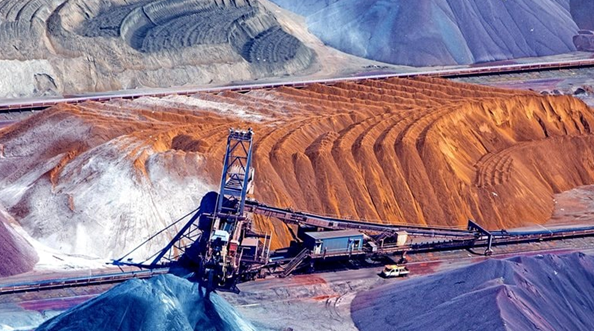Mining for operational excellence

The word ‘boomtown’ was practically invented for the mining industry, which has a history of gold rush euphoria followed by equally intense busts. The pattern has continued through the past decade, with mining companies buffeted by a global pandemic, trade tensions, and geopolitical conflicts.
Very few of them have been able to capitalize on the peak periods to prepare for downturns. Instead, as we noted in 2022, the mining sector’s productivity has remained largely stagnant for decades. Volatile commodity prices, deteriorating ore quality at mature sites, rising labor and energy prices, and intensifying sustainability pressures have all made it harder to attract and retain critical talent and substantially improve productivity.
Technological advances, including gen AI, could unleash the mining sector’s productivity potential—if companies can deploy these innovations for lasting impact. As of this writing, few companies in any sector have done that successfully. Recent McKinsey research finds that across industries, only about 5 percent of companies attribute at least 10 percent of their EBIT to gen AI. And the odds of success for digital transformation remain daunting, with earlier research finding that most digital investments generate less than one-third of their anticipated impact.
Yet a few regional and global mining organizations have achieved exceptional results (Exhibit 2). They not only are outperforming their peers but also keep improving their performance over time, resisting complacency and widening the competitive gap. They are using technology to generate lasting value—and for some, their track record has culminated in the award of the Shingo Prize, widely recognized as among the world’s highest honors for operational excellence.
What separates these few outliers from their peers? It isn’t a better location or higher-quality assets. It isn’t an unusual labor pool or greater access to capital. It isn’t even better-quality technology.
It’s a commitment to a culture change: Teams and individuals across the organization learn not only what operating excellence looks like but also how they can keep improving on it, year after year. They do more than simply compete today; they begin to shape the organization for tomorrow.
What operational excellence in mining looks like
When we analyzed how the outperformers turned operational excellence into business value, a distinct, four-stage pattern emerged:
- Early improvements yield rapid production increases. In the first few years after launching operational-excellence initiatives, output rises—often dramatically. A major tin mine, for example, saw a 40 percent increase in production over the first three years of its transformation: 14 percent in the first year, followed by 12 percent in the two successive years.
- As time passes, productivity continues to improve. Even as the first wave of production gains starts to level off, productivity nevertheless continues upward on a more gradual trajectory. Two years into its transformation, a copper miner increased production by 3 to 5 percent per year, despite erosion in ore grades.
- Maturity strengthens resilience. The more mature organizations in the sector have been able to withstand major cost increases, including during the high inflation periods after the COVID-19 pandemic. The outperformers have reduced unit costs by an average compound annual rate of 3 to 6 percent, largely by increasing their productivity.
- Employees stay engaged. Across all the outperforming mining organizations, internal employee satisfaction surveys show continual improvement of between five and ten percentage points per year. Retention rates in these organizations were unusually high—exceeding 90 percent annually at some recognized sites—and have proved to be a critical advantage given the talent shortfalls the mining industry faces.
Taken together, these four stages paint a picture of what operational excellence means for a business. For example, despite an unusually challenging year, one award-winning mining site managed to exceed its production and profitability targets, while no other unit in the entire enterprise even met performance expectations. At another mining organization, one business unit exceeded its targets to such an extent that the company raised the targets midyear so the unit could subsidize other areas that were lagging behind.
)
)
)

